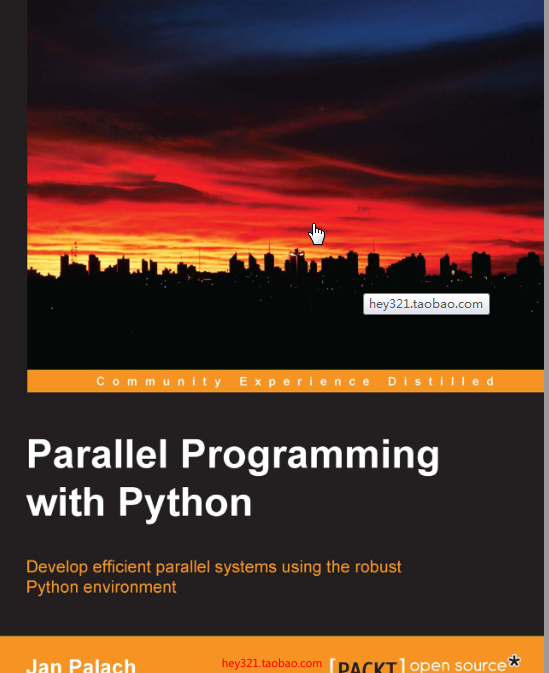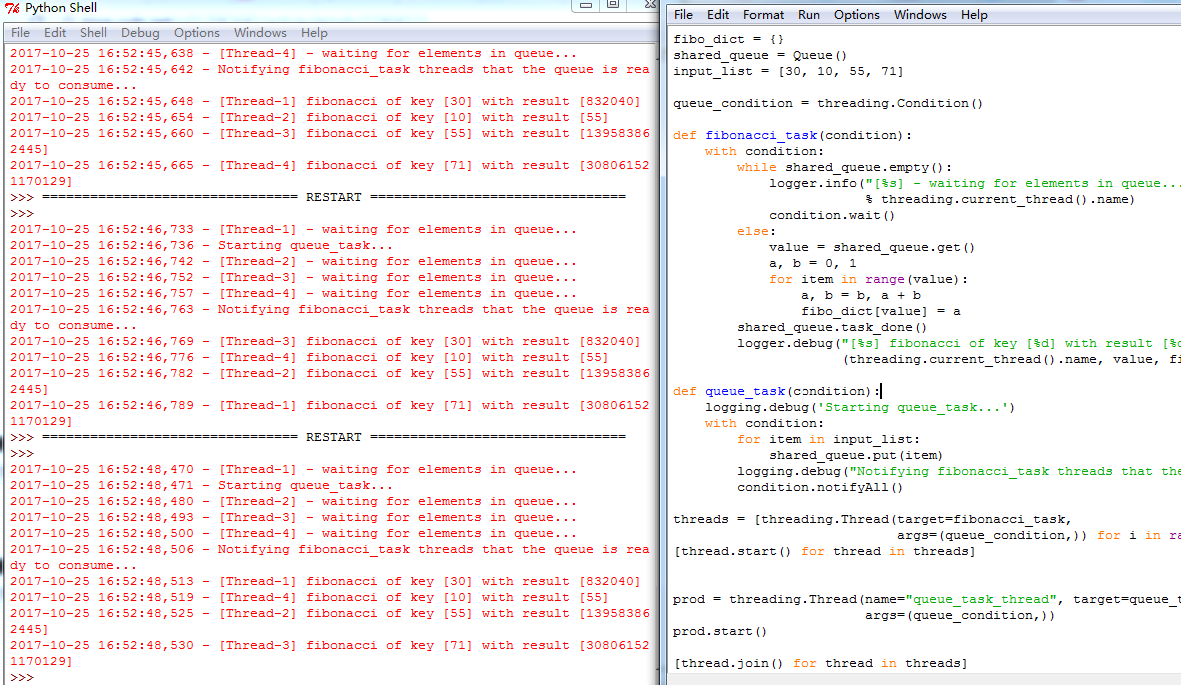并发编程,在哪个语言里都属于高端应用,一定得会了才好意思说懂了这门语言。
在工作中用得并不是很多,忘了一些内容,就慢慢看,慢慢补上。
今天一天看了近三分之一(我看外文越来越快了??:)),
实践一下多线程的threading模块。

#coding: utf-8
import logging, threading
from Queue import Queue
logger = logging.getLogger()
logger.setLevel(logging.DEBUG)
formatter = logging.Formatter('%(asctime)s - %(message)s')
ch = logging.StreamHandler()
ch.setLevel(logging.DEBUG)
ch.setFormatter(formatter)
logger.addHandler(ch)
fibo_dict = {}
shared_queue = Queue()
input_list = [30, 10, 55, 71]
queue_condition = threading.Condition()
def fibonacci_task(condition):
with condition:
while shared_queue.empty():
logger.info("[%s] - waiting for elements in queue..."
% threading.current_thread().name)
condition.wait()
else:
value = shared_queue.get()
a, b = 0, 1
for item in range(value):
a, b = b, a + b
fibo_dict[value] = a
shared_queue.task_done()
logger.debug("[%s] fibonacci of key [%d] with result [%d]" %
(threading.current_thread().name, value, fibo_dict[value]))
def queue_task(condition):
logging.debug('Starting queue_task...')
with condition:
for item in input_list:
shared_queue.put(item)
logging.debug("Notifying fibonacci_task threads that the queue is ready to consume...")
condition.notifyAll()
threads = [threading.Thread(target=fibonacci_task,
args=(queue_condition,)) for i in range(4)]
[thread.start() for thread in threads]
prod = threading.Thread(name="queue_task_thread", target=queue_task,
args=(queue_condition,))
prod.start()
[thread.join() for thread in threads]






















 105
105











 被折叠的 条评论
为什么被折叠?
被折叠的 条评论
为什么被折叠?








